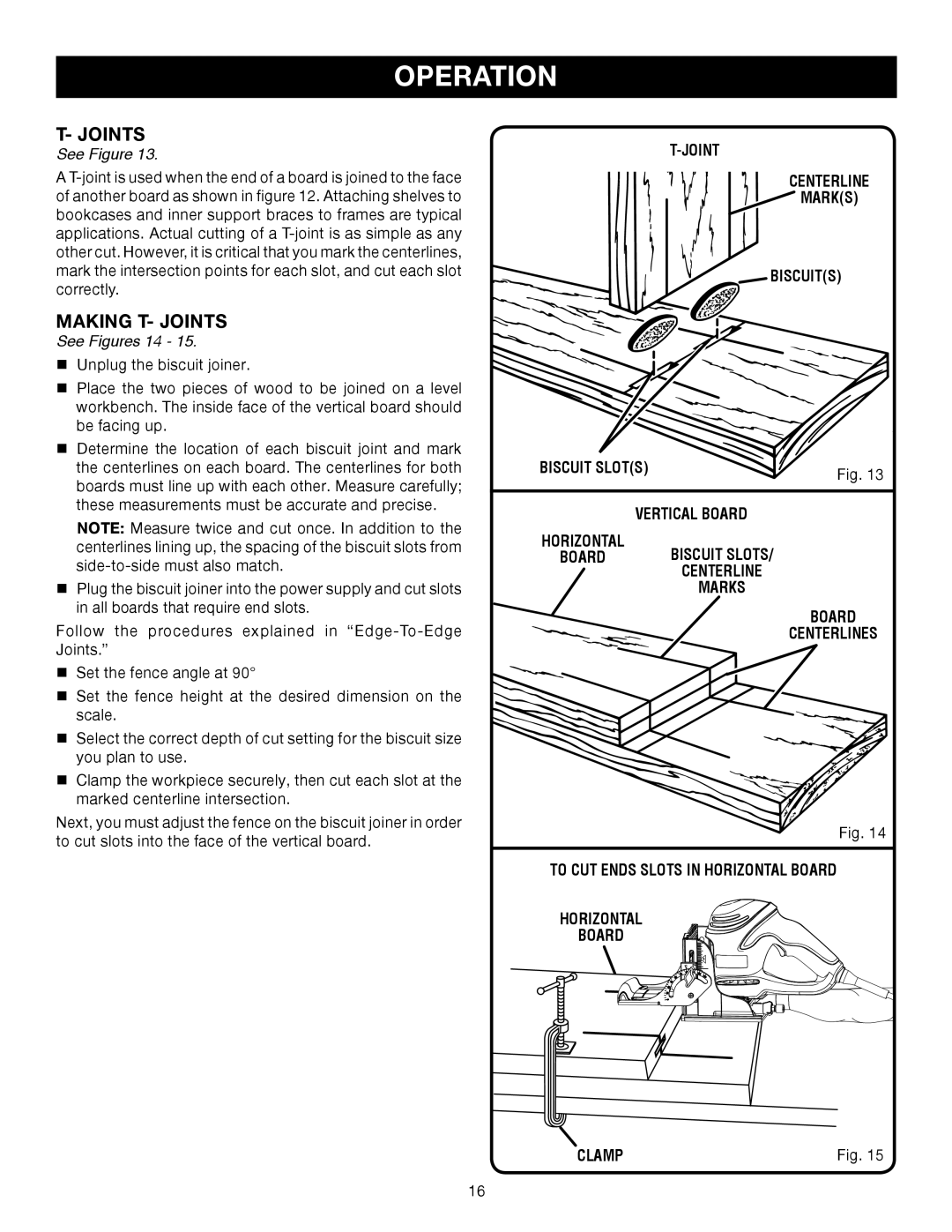JM82 specifications
The Ryobi JM82 is a versatile and compact jigsaw, ideal for both DIY enthusiasts and professional woodworkers. Known for its powerful performance, the JM82 combines modern technology with user-friendly features to deliver precision cutting in various materials.One of the standout characteristics of the JM82 is its 7-amp motor, providing ample power for cutting through wood, plastic, and even metal. The variable speed control allows users to adjust the cutting speed from 0 to 3,000 strokes per minute. This feature is essential for matching the cutting speed to the material being worked on, ensuring smooth and efficient cuts.
The JM82 also boasts a unique orbital action, offering four different setting options. This orbital feature enhances the cutting efficiency by allowing the blade to move in a circular motion as well as up and down, effectively reducing the resistance and enabling faster cuts in thicker materials. This level of customization empowers users to tailor their cutting techniques to specific tasks, ranging from intricate curves to straight cuts.
Another notable feature of the Ryobi JM82 is its tool-free blade change system. This mechanism allows users to quickly and easily swap out blades without needing additional tools. The ability to change blades effortlessly enhances productivity and convenience, especially when working on projects that require different blade types for various applications.
The integrated laser guide is another remarkable technological advancement in the JM82. It projects a clear line on the workpiece, ensuring precise alignment and professional-grade results. This feature is particularly useful for intricate cuts and patterns, maximizing accuracy and reducing the likelihood of mistakes.
Ergonomics is a key focus in the design of the JM82. The handle is designed with a soft grip, providing comfort during extended use and minimizing user fatigue. A built-in dust blower keeps the cutting line clear of debris, improving visibility and ensuring clean cuts.
In terms of build quality, the Ryobi JM82 is constructed with durability in mind. The sturdy design and high-quality materials ensure that the jigsaw can withstand rigorous use while maintaining its performance over time.
In summary, the Ryobi JM82 is a powerful, feature-rich jigsaw that caters to a wide range of cutting needs. With its adjustable speed, orbital action, tool-free blade change, integrated laser guide, and ergonomic design, it stands out as a reliable tool for any woodworking project. Whether you're creating intricate designs or making straight cuts, the JM82 delivers precision and performance, making it an essential addition to any toolbox.

